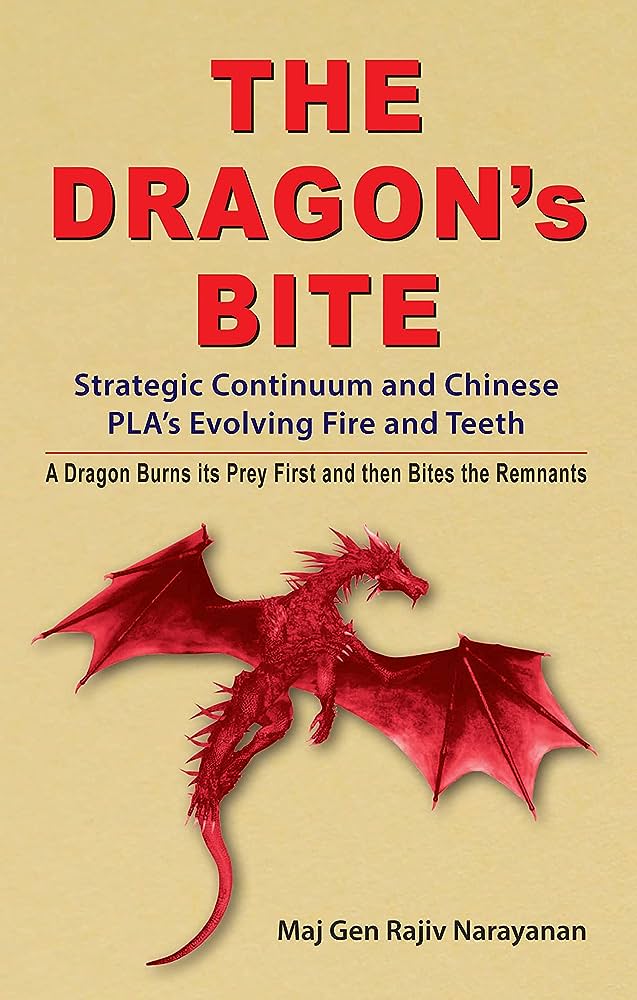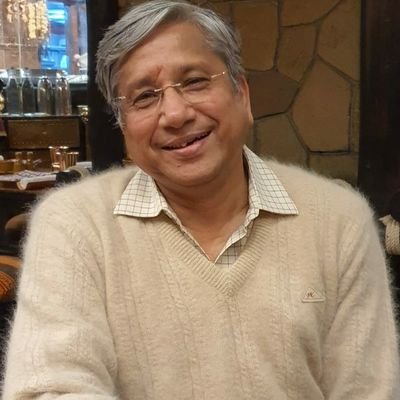
If one were to delve into the history of China until 1976, when Mao Zedong one of the greatest mass murderers of all time passed away, there is the story of the greatest human tragedies of modern contemporary history. However, all that changed in 1976 after Mao’s passing as China began a new path toward prosperity under the leadership of Deng Xiaoping who followed the principle of the “Peaceful rise of China” and Hide your strength, bide your time.” But to make a long story short, all that Changed under the present leadership of Xi Jinping who is using the People Liberation Army (PLA) as a continuation of his politics.
The book The Dragon’s Bite: Strategic Continuum and Chinese PLA’s Evolving Fire and Teeth written by retired Major General Rajiv Narayanan AVSM, VSM (V) gives a dispassionate insight into how China is trying to increase its influence in the world using its military power and delves into the historicity of the PLA’s inception and its progression into a vast, powerful and its attempts to become a technically superior military force in the world.
This book is a delectable read into how China totally revamped the PLA into a modern fighting force, its tactics, and its various strategies which will be an eye-opener.
The book is without polemics or rhetoric, and it is not esoteric and which makes it an easy read for defence and geopolitics enthusiasts to understand and gain insight. After retirement, Gen Rajiv Narayanan is now working as a Professor of Practice in the Department of Aeronautical Engineering at the Indian Institute of Technology (IIT) Madras and is a popular analyst on various YouTube podcasts.
This book is a delectable read into how China totally revamped the PLA into a modern fighting force, its tactics, and its various strategies which will be an eye-opener. The title of the book The Dragon’s Bite is more than what meets the eye because the dragon first burns its prey and only then it devours its remnants as the meat has to be tender. And just like Mao who said that the army’s role is to serve political ends, Xi is using the PLA as his enforcer to tenderize his opposition to further his political ambitions.

Also, it is now using the same tactic that the Europeans had used to enter markets of various nations by undermining its Comprehensive National Power (CNP) before unleashing its PLA, but hoping never to fight. But perhaps the greatest weakness of the PLA is that it does not serve the people of China but the Communist Party of China and there lies the weakness (page No 156).
China shares its borders with many nations and over the years it has used its economic might based on the painful lessons it had learned from the past and is now trying to subvert them with its vast barrels of Guns as propended by Mao. Therefore it does not need a very strong PLA to deal with the poor nations of the Indo-Pacific region, except, India, Japan, Australia, and the USA (Quad, AUKUS) which it views as its enemy. However, it is India that stands strong and tall which Xi views as his greatest obstacle to gaining hegemony in Asia.
Xi Jinping who now has more political power than Mao sees India as a direct threat and challenge in this region and has used a lot of asymmetric tactics to destabilize India with Pakistan acting as its plausible deniability proxy
India is strategically located with open access to seas and in the last ten years, it has strengthened its position in the Indian Ocean Region. Xi Jinping who now has more political power than Mao sees India as a direct threat and challenge in this region and has used a lot of asymmetric tactics to destabilize India with Pakistan acting as its plausible deniability proxy and patsy and using Pakistan as a distraction and maybe the future as an expendable asset if need be. For China, Pakistan is nothing but a highway into central Asia and he who controls the road and the shipping lanes control the economic destinies of other nations. Also, As China’s economic strength has grown over the years, it has now set its sight on becoming an expeditionary power and It has already managed to Overseas Strategic Strong Points.
This book gives detailed information on how China is using its so-called private and state-owned enterprises to further its ambition but more importantly, it gives an uncluttered insight into its vast and growing Military Command and Control Systems of the PLA as the author calls it the sword of the CPC. As the PLA is getting more modernized China which had used Unrestricted Warfare tactics is now adding technology to its arsenal, making it a very lethal combination, and for the CPC, any and every aspect of business and technology must be used to further its ambition. Gen Rajiv simplifies how the CPC clandestinely acquired illegal intellectual property, key research, and technological advancement to advance its military aims (Page No 116).
Within China, the Communist Party of China (CPC) uses its power to control the masses with its ideology to maintain its political control and this book is written with the purpose of complicating our understanding of the aspect of the Chinese Grand Strategy that uses economic coercion, military threats to gain influence and power in all of South East Asia, Central Asia, and the African the region without fighting.
The book gives detailed information on how China is using its so-called private and state-owned enterprises to further its ambition but more importantly, it gives an uncluttered insight into its vast and growing Military Command and Control Systems of the PLA.
This book also has input on how India must also take some countermeasures to maintain its strategic autonomy with a clear enunciation of our military strategy and develop a strong punitive deterrence to both adversaries (Page No 193). The book talks about integrated military strategy should lay more stress on technology, firepower, force multipliers, maritime forces, manoeuvre forces and aero-space power to change conventional force ratio so we have the ability to ‘degrade, disrupt, dislocate, destroy, and defeat’ when it comes to waging war (Page No 194). The book further goes into detail on how to strengthen our military to blunt the dragon.
For, China the Century of Humiliation started with the Opium Wars of 1839–1842 and 1856–1860. The Qing dynasty was overwhelmed by the United Kingdom and France and other European powers who had modern military technology. That forced the Chinese to give unfavourable concessions, on tariffs, plus they had to pay reparations and cede territory to the Europeans. That was one of history’s great injustices and India also had a role to play in it as the British forced our farmers to grow opium.
Xi was born a princeling as his father Xi Zhongxun who was a senior party figure under Mao later fell out of favour with the Red Emperor and was purged along with his family and had to endure pain and humiliation until they were all rehabilitated. Normally one would hate the person who had tormented one’s family, but in the case of Xi Jinping, he wants to be more like Mao. For decades XI has been trying to build his social prestige and reputation, as he concentrated on getting all the powers to favour him and now he has no one to challenge him due to his purges.
Xi in his quest to make China a great power, prematurely awakened the PLA. In the Hindu Epic Ramayana, Ravana had awakened Kumbhakarna before his sleep cycle was over and if he had not done that, Kumbhakarna would have been unbeatable, alas his desire for victory clouded his judgment. And just as Ravana fell due to his arrogance and ego, the story of Xi, his dreams of world domination, and the fate of PLA will also be the same.
I am ending this book review with a personal note that this book is perfect for those who are studying International Relations, particularly if their choice of research is Peace and Conflict Studies. For a small book, it carries quite a bit of weight and this author has a feeling that this book might be given as important reading material to our military officers.
(The author is a freelance writer and has published articles on defence and strategic affairs and book reviews. He tweets @LaxmanShriram78. Excerpts from the book have been slightly paraphrased for the sake of continuity)
Book: The Dragon’s Bite: Strategic Continuum and Chinese PLA’s Evolving Fire and Teeth
Author: Major General Rajiv Narayanan
Publishers: Lancers
Price: ₹ 945 (Hardcover)
SW Ratings: *****

👏🏻👏🏻👏🏻